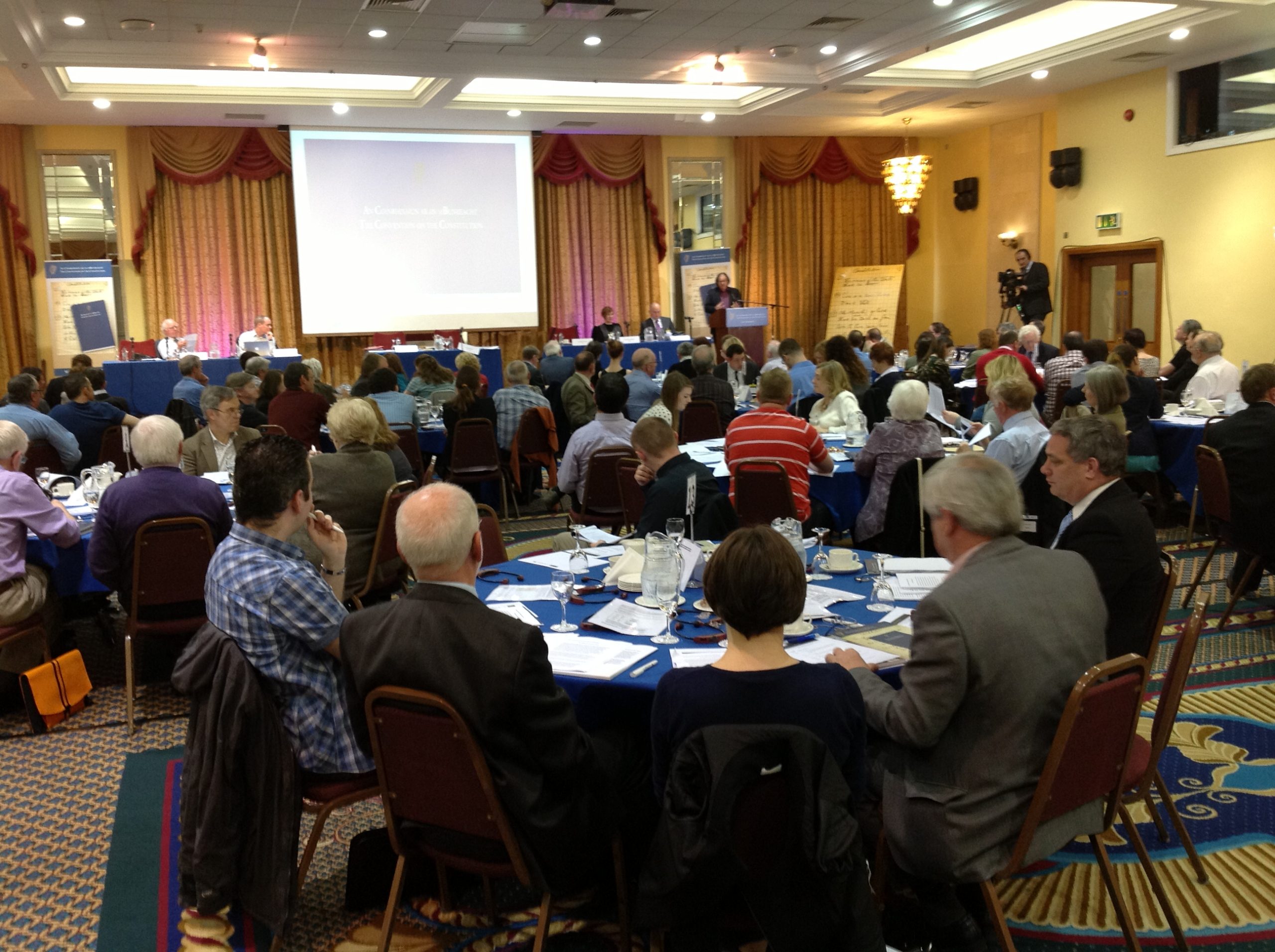Explore how the Irish Constitutional Convention set an example for reforming democracy through public participation and informed debate
Modern political systems are increasingly challenged to adapt to shifts in societal values while maintaining principles of fairness, trust, and engagement. One innovative approach to bridging the gap between governance and citizens is the use of constitutional conventions that engage the public directly in decision-making processes. A compelling example of this can be found in Ireland’s 2012–2014 Constitutional Convention. This case provides valuable insights for fostering inclusiveness, transparency, and deliberative democratic practices.
This blog explores how the Irish Constitutional Convention worked, what it achieved, and why its methodology offers lessons for other nations seeking to modernise their governance models.
What was the Irish Constitutional Convention?
The Irish Constitutional Convention was established in December 2012 to discuss amendments to Ireland’s 1937 Constitution. It aimed to address a range of social, political, and cultural issues that had gained prominence in modern Irish society. The convention combined citizens and elected representatives in a unique model intended to ensure that both expertise and public opinion informed decision-making.
Key Structure and Participants
The convention consisted of:
- 66 randomly selected citizens representing Ireland’s demographic diversity (age, gender, region, etc.).
- 33 elected representatives, including members of the Irish Oireachtas and political party representatives from Northern Ireland.
- 1 independent chairperson, tasked with steering deliberations.
The government deliberately constructed this mixed membership to balance expertise, citizen input, and cross-border political inclusion.
The Agenda
The government pre-defined eight central topics for discussion, which included:
- Reducing the presidential term of office.
- Lowering the voting age.
- Reviewing the Dáil electoral system.
- Voting rights for citizens abroad in presidential elections.
- Legalising same-sex marriage.
- Encouraging women’s participation in public life.
- Removing the offence of blasphemy from the Constitution.
- Increasing women’s political representation.
Once the core discussions were complete, the convention also identified additional issues that could be considered for future reforms.
Function and Deliberative Process
The convention embraced a participatory approach. Public submissions were invited to inform the discussions, which were accessible through live-streamed plenary sessions. Expert witnesses presented evidence, small-group discussions took place under the guidance of facilitators, and alternative proposals were formulated and voted upon.
This structure ensured a transparent process that valued evidence-based debate and encouraged genuine public engagement.
Notable Achievements of the Convention
The Irish Constitutional Convention had success not only in terms of its recommendations but also in its experimental approach to participatory democracy.
Key Outcomes
- Legalisation of Same-Sex Marriage
A pivotal achievement of the convention was recommending a referendum on same-sex marriage. The vote overwhelmingly supported constitutional reform to allow marriage equality, paving the way for a 2015 referendum in which 62% of the electorate voted in favour.
- Blasphemy Clause Removal
Based on the convention’s recommendation, a referendum was held in 2018 to remove the offence of blasphemy from the Constitution, which was approved by 65% of voters.
- Voting Rights for Younger Citizens
Although the convention initially advocated lowering the voting age to 16, this proposal was not adopted. Nevertheless, its inclusion on the agenda demonstrated a push toward increased youth political participation.
Public Legacy
The convention sparked widespread public debate on these topics. By presenting its deliberations through regional forums, media coverage, and social media outreach, it fostered greater public understanding of nuanced constitutional issues.
Lessons from the Irish Constitutional Convention
The Irish example provides a roadmap for other countries aiming to re-engage citizens in democratic processes. Below are some key takeaways:
1. A Diverse and Balanced Membership
Random selection of participants from diverse demographics ensured that the convention reflected the lived realities of Irish society. Including politicians added credibility and increased the likelihood that results would influence policy.
Lesson: A mixed membership model enhances inclusivity and ensures legitimacy in public deliberations.
2. Structured Deliberation
The convention’s process was methodical and transparent. By inviting submissions, consulting expert witnesses, and hosting facilitated small-group discussions, it ensured that even complex topics were comprehended and debated thoughtfully.
Lesson: Structured and guided deliberation fosters genuine engagement and productive debate among participants.
3. Transparency Builds Trust
Live-streaming sessions, publishing reports, and sharing media updates enabled the public to witness the convention’s deliberations in real time. By involving the public in every stage, organisers promoted trust in the initiative.
Lesson: Transparency is key to earning public confidence in participatory processes.
4. Clear Government Response Framework
The Irish government committed to responding to all recommendations of the convention. Although not all proposals led to immediate reforms, this approach ensured accountability and follow-up action.
Lesson: Governments must outline clear procedures for addressing outcomes to demonstrate respect for civic input.
5. Focused Timeframe
Operating within a one-year timeframe with a finite agenda helped maintain focus and productivity, ensuring real progress was achieved within a limited period.
Lesson: Setting clear deadlines and manageable objectives prevents deliberative processes from stagnating.
Challenges to Consider
While the convention achieved significant milestones, it also faced some challenges:
- Non-binding Decisions
The government was not obligated to implement recommendations. This led to criticisms that citizen input was not always adequately actioned.
- Representation Gaps
While participants were chosen randomly, some groups (e.g., non-citizen residents) were underrepresented. Additionally, not all selected citizens chose to participate, slightly affecting the demographic balance.
- Human Rights Oversight
Critics noted an absence of broader human rights issues, such as access to housing or healthcare, within the convention’s remit.
These challenges highlight the importance of ensuring both representativeness and real commitment to outcomes when adopting similar approaches.
Why Other Countries Should Take Note
Constitutional conventions like Ireland’s hold immense promise for countries exploring ways to modernise governance and bridge growing divides between citizens and political institutions. For example, the United Kingdom could adapt this model to address issues such as regional representation or electoral reform, fostering greater public trust and participation.
The success of the Irish Constitutional Convention demonstrates that empowering citizens to engage in decision-making is not just an experiment in democracy but a step toward revitalising it.
Harnessing Democratic Innovation
Ireland’s experiment with the Constitutional Convention underscores the value of collaborative decision-making structures that involve the public and elected representatives. By fostering inclusive, transparent, and evidence-driven debates, it set the stage for meaningful constitutional change and created a template for participatory democracy in the 21st century.
















